-
 Bitcoin
Bitcoin $106,754.6083
1.33% -
 Ethereum
Ethereum $2,625.8249
3.80% -
 Tether USDt
Tether USDt $1.0001
-0.03% -
 XRP
XRP $2.1891
1.67% -
 BNB
BNB $654.5220
0.66% -
 Solana
Solana $156.9428
7.28% -
 USDC
USDC $0.9998
0.00% -
 Dogecoin
Dogecoin $0.1780
1.14% -
 TRON
TRON $0.2706
-0.16% -
 Cardano
Cardano $0.6470
2.77% -
 Hyperliquid
Hyperliquid $44.6467
10.24% -
 Sui
Sui $3.1128
3.86% -
 Bitcoin Cash
Bitcoin Cash $455.7646
3.00% -
 Chainlink
Chainlink $13.6858
4.08% -
 UNUS SED LEO
UNUS SED LEO $9.2682
0.21% -
 Avalanche
Avalanche $19.7433
3.79% -
 Stellar
Stellar $0.2616
1.64% -
 Toncoin
Toncoin $3.0222
2.19% -
 Shiba Inu
Shiba Inu $0.0...01220
1.49% -
 Hedera
Hedera $0.1580
2.75% -
 Litecoin
Litecoin $87.4964
2.29% -
 Polkadot
Polkadot $3.8958
3.05% -
 Ethena USDe
Ethena USDe $1.0000
-0.04% -
 Monero
Monero $317.2263
0.26% -
 Bitget Token
Bitget Token $4.5985
1.68% -
 Dai
Dai $0.9999
0.00% -
 Pepe
Pepe $0.0...01140
2.44% -
 Uniswap
Uniswap $7.6065
5.29% -
 Pi
Pi $0.6042
-2.00% -
 Aave
Aave $289.6343
6.02%
How long will it take for the morning star pattern to rise? How to calculate the target position?
The morning star pattern in crypto trading signals a potential bullish reversal, often leading to price increases within hours to weeks depending on market conditions and volume confirmation.
Jun 16, 2025 at 12:42 pm
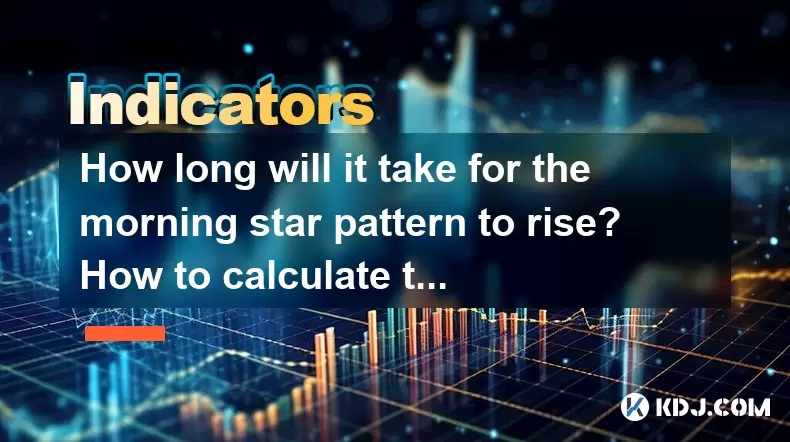
Understanding the Morning Star Pattern in Cryptocurrency Trading
The morning star pattern is a widely recognized candlestick reversal pattern that signals a potential shift from a downtrend to an uptrend. In the context of cryptocurrency trading, where price volatility is high and sentiment changes rapidly, this pattern becomes especially important for technical analysts. It consists of three candles: a large bearish candle, followed by a small-bodied candle (or doji) indicating indecision, and finally a large bullish candle that confirms the reversal.
Traders often seek to identify this formation on crypto charts to anticipate upward movements. However, the question remains: how long does it take for the morning star pattern to lead to a rise in price?
Timeframe Considerations for the Morning Star Pattern
The duration between the formation of the morning star pattern and the subsequent price increase can vary significantly depending on several factors such as market conditions, trading volume, and overall sentiment in the cryptocurrency space. On shorter timeframes like 15-minute or 1-hour charts, the rise may occur within hours. On daily or weekly charts, it might take days or even weeks for the trend to fully reverse.
Market liquidity also plays a crucial role. In highly liquid markets such as Bitcoin or Ethereum, the reaction tends to be quicker due to increased participation. Conversely, altcoins with lower volume may experience delayed responses. Traders should not rely solely on the appearance of the pattern but must combine it with other indicators like moving averages or RSI to confirm the strength of the reversal.
Calculating the Target Position After a Morning Star Formation
Once a valid morning star pattern has been confirmed, traders typically calculate a target price based on the size of the pattern itself. This involves measuring the range from the lowest point of the first bearish candle to the highest point of the third bullish candle.
- Identify the low of the first bearish candle.
- Measure the vertical distance to the high of the third bullish candle.
- Add that same distance to the closing price of the third candle to determine the initial target level.
This method provides a baseline for setting profit-taking points. However, in volatile crypto markets, prices may overshoot or undershoot these levels. Therefore, using dynamic tools like Fibonacci extensions or channel analysis can enhance accuracy when projecting future price targets.
Volume Confirmation and Its Role in Validating the Morning Star
One of the most overlooked aspects of confirming the morning star pattern is analyzing trading volume. A legitimate reversal is usually accompanied by a noticeable increase in volume during the formation of the third bullish candle. If volume remains flat or declines, the likelihood of a false signal increases.
- Check if the third candle shows higher-than-average volume compared to recent sessions.
- Compare the volume of the second candle; a significant drop here indicates hesitation among traders.
- Use volume oscillators like OBV (On-Balance Volume) to track accumulation patterns.
In cryptocurrency trading, sudden spikes in volume can indicate whale activity or macroeconomic news influencing price action. Therefore, volume confirmation helps filter out weaker signals and improves the reliability of the morning star setup.
Practical Steps to Trade the Morning Star Pattern in Crypto Markets
Successfully trading the morning star pattern requires a structured approach and strict risk management. Here are practical steps traders can follow:
- Monitor multiple timeframes to ensure alignment of trends before entering a trade.
- Wait for the full completion of the three-candle pattern before initiating any position.
- Place a stop-loss order just below the low of the first bearish candle to limit downside risk.
- Set take-profit levels based on measured move projections or key resistance zones.
- Consider trailing stops once the price moves favorably to lock in gains dynamically.
It’s essential to avoid overtrading based solely on this pattern. Combining it with support/resistance levels, trendlines, or momentum indicators can significantly improve success rates in cryptocurrency trading environments.
Common Mistakes to Avoid When Using the Morning Star Pattern
Many traders fall into traps when interpreting the morning star pattern, especially in the fast-moving world of cryptocurrencies. One common mistake is acting on incomplete patterns — assuming the third candle will close bullish before it actually does. Another is ignoring broader market context, such as upcoming halving events or regulatory news affecting crypto prices.
- Entering trades prematurely without waiting for full candle closure.
- Ignoring the significance of volume and relying purely on price action.
- Failing to adjust strategies across different timeframes.
- Overlooking the importance of psychological factors in crypto markets.
By recognizing these pitfalls, traders can better utilize the morning star pattern as part of a comprehensive trading strategy rather than a standalone signal.
Frequently Asked Questions
Q: Can the morning star pattern appear in intraday cryptocurrency charts?
Yes, the morning star pattern frequently appears in short-term charts like 15-minute or 1-hour intervals. However, its reliability increases on higher timeframes like 4-hour or daily charts where noise and false signals are minimized.
Q: Is the morning star pattern more effective in certain cryptocurrencies?
While applicable across all digital assets, the morning star pattern tends to yield more reliable signals in major cryptocurrencies like BTC and ETH due to their higher liquidity and clearer trend formations compared to smaller-cap altcoins.
Q: How does the morning star compare to other candlestick reversal patterns?
The morning star pattern is considered one of the strongest bullish reversal setups, especially when contrasted with less reliable patterns like the hammer or engulfing pattern. It includes a confirmation candle, making it more robust statistically.
Q: What should I do if the morning star pattern fails?
If the price continues to decline after what appeared to be a valid morning star pattern, reassess your entry logic. Consider tightening stop-loss levels or re-analyzing supporting indicators to prevent further losses.
Disclaimer:info@kdj.com
The information provided is not trading advice. kdj.com does not assume any responsibility for any investments made based on the information provided in this article. Cryptocurrencies are highly volatile and it is highly recommended that you invest with caution after thorough research!
If you believe that the content used on this website infringes your copyright, please contact us immediately (info@kdj.com) and we will delete it promptly.
- 2025-W Uncirculated American Gold Eagle and Dr. Vera Rubin Quarter Mark New Products
- 2025-06-13 06:25:13
- Ruvi AI (RVU) Leverages Blockchain and Artificial Intelligence to Disrupt Marketing, Entertainment, and Finance
- 2025-06-13 07:05:12
- H100 Group AB Raises 101 Million SEK (Approximately $10.6 Million) to Bolster Bitcoin Reserves
- 2025-06-13 06:25:13
- Galaxy Digital CEO Mike Novogratz Says Bitcoin Will Replace Gold and Go to $1,000,000
- 2025-06-13 06:45:13
- Trust Wallet Token (TWT) Price Drops 5.7% as RWA Integration Plans Ignite Excitement
- 2025-06-13 06:45:13
- Ethereum (ETH) Is in the Second Phase of a Three-Stage Market Cycle
- 2025-06-13 07:25:13
Related knowledge
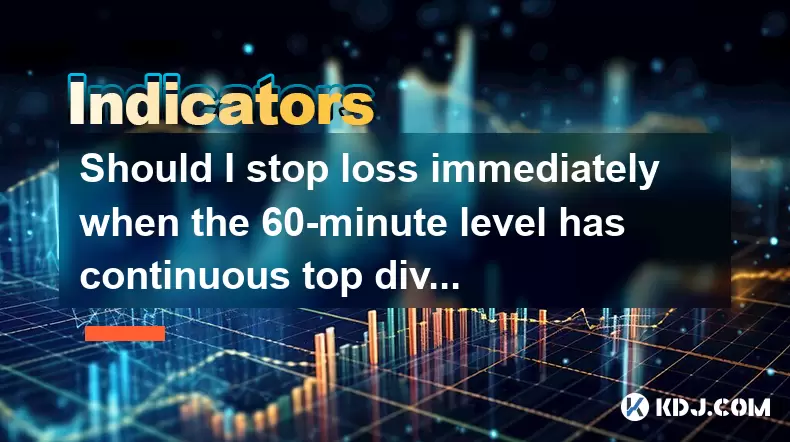
Should I stop loss immediately when the 60-minute level has continuous top divergence?
Jun 17,2025 at 05:28pm
Understanding Top Divergence in the 60-Minute ChartIn cryptocurrency trading, top divergence refers to a technical signal where the price of an asset makes higher highs while the indicator (often RSI or MACD) makes lower lows. This is commonly interpreted as a sign of weakening momentum and potential reversal. When this occurs on the 60-minute chart, it...
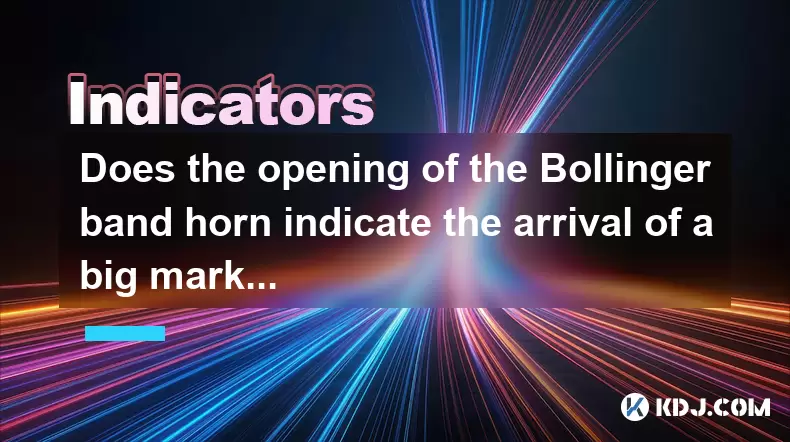
Does the opening of the Bollinger band horn indicate the arrival of a big market?
Jun 17,2025 at 06:28pm
Understanding the Bollinger Bands and Their StructureBollinger Bands are a widely used technical analysis tool in the cryptocurrency market, developed by John Bollinger. They consist of three lines: a simple moving average (SMA), typically set at 20 periods, and two standard deviation bands above and below this SMA. These bands dynamically expand and co...
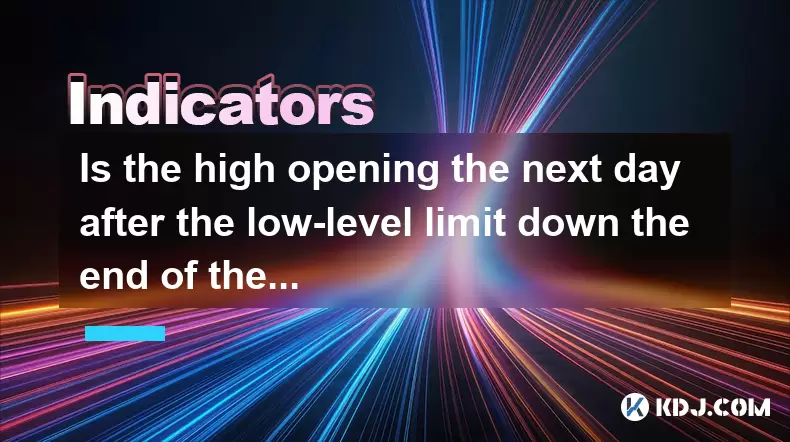
Is the high opening the next day after the low-level limit down the end of the wash?
Jun 17,2025 at 05:57pm
Understanding the Concept of a Limit Down and Its ImplicationsIn the world of cryptocurrency trading, a limit down refers to a situation where the price of a digital asset drops sharply, reaching its maximum allowable decline within a specific time frame. This mechanism is often seen on exchanges that implement daily price limits to prevent excessive vo...
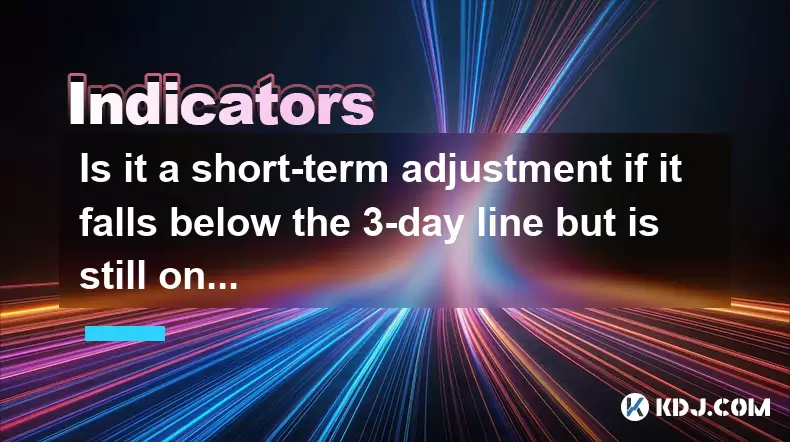
Is it a short-term adjustment if it falls below the 3-day line but is still on the 10-day line?
Jun 17,2025 at 04:07pm
Understanding the 3-Day and 10-Day Moving AveragesIn cryptocurrency trading, moving averages are essential tools for gauging trend strength and potential reversals. The 3-day moving average is a short-term indicator that reflects recent price action with minimal lag, making it highly sensitive to sudden market shifts. In contrast, the 10-day moving aver...
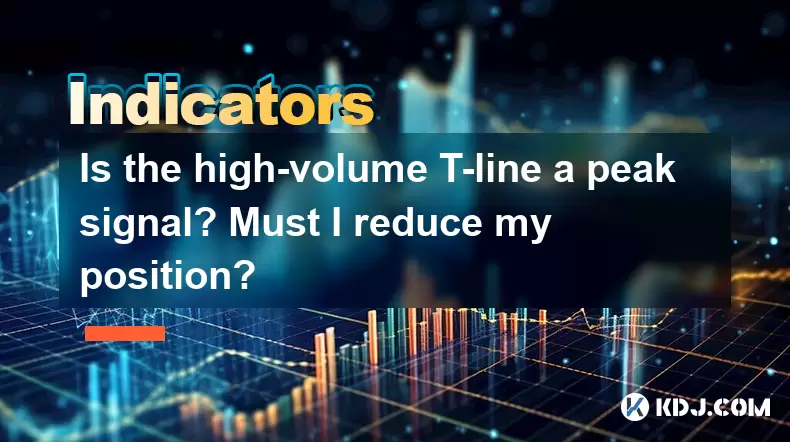
Is the high-volume T-line a peak signal? Must I reduce my position?
Jun 17,2025 at 06:07pm
Understanding the T-Line Pattern in Cryptocurrency TradingIn cryptocurrency trading, technical patterns are frequently used by traders to anticipate price movements. One such pattern is the T-line, which appears on candlestick charts and is characterized by a long upper or lower shadow with little or no body. A high-volume T-line occurs when this patter...
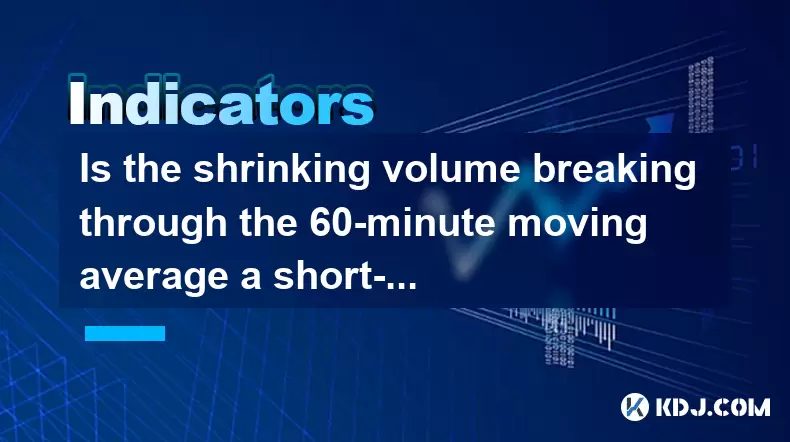
Is the shrinking volume breaking through the 60-minute moving average a short-term weakness? Should I run?
Jun 17,2025 at 06:21pm
Understanding the 60-Minute Moving Average in Cryptocurrency TradingIn cryptocurrency trading, the 60-minute moving average is a popular technical indicator used by traders to assess short-term trends. This metric calculates the average price of an asset over the last 60 minutes and updates with each passing minute. Traders often use it to identify pote...

Should I stop loss immediately when the 60-minute level has continuous top divergence?
Jun 17,2025 at 05:28pm
Understanding Top Divergence in the 60-Minute ChartIn cryptocurrency trading, top divergence refers to a technical signal where the price of an asset makes higher highs while the indicator (often RSI or MACD) makes lower lows. This is commonly interpreted as a sign of weakening momentum and potential reversal. When this occurs on the 60-minute chart, it...

Does the opening of the Bollinger band horn indicate the arrival of a big market?
Jun 17,2025 at 06:28pm
Understanding the Bollinger Bands and Their StructureBollinger Bands are a widely used technical analysis tool in the cryptocurrency market, developed by John Bollinger. They consist of three lines: a simple moving average (SMA), typically set at 20 periods, and two standard deviation bands above and below this SMA. These bands dynamically expand and co...

Is the high opening the next day after the low-level limit down the end of the wash?
Jun 17,2025 at 05:57pm
Understanding the Concept of a Limit Down and Its ImplicationsIn the world of cryptocurrency trading, a limit down refers to a situation where the price of a digital asset drops sharply, reaching its maximum allowable decline within a specific time frame. This mechanism is often seen on exchanges that implement daily price limits to prevent excessive vo...

Is it a short-term adjustment if it falls below the 3-day line but is still on the 10-day line?
Jun 17,2025 at 04:07pm
Understanding the 3-Day and 10-Day Moving AveragesIn cryptocurrency trading, moving averages are essential tools for gauging trend strength and potential reversals. The 3-day moving average is a short-term indicator that reflects recent price action with minimal lag, making it highly sensitive to sudden market shifts. In contrast, the 10-day moving aver...

Is the high-volume T-line a peak signal? Must I reduce my position?
Jun 17,2025 at 06:07pm
Understanding the T-Line Pattern in Cryptocurrency TradingIn cryptocurrency trading, technical patterns are frequently used by traders to anticipate price movements. One such pattern is the T-line, which appears on candlestick charts and is characterized by a long upper or lower shadow with little or no body. A high-volume T-line occurs when this patter...

Is the shrinking volume breaking through the 60-minute moving average a short-term weakness? Should I run?
Jun 17,2025 at 06:21pm
Understanding the 60-Minute Moving Average in Cryptocurrency TradingIn cryptocurrency trading, the 60-minute moving average is a popular technical indicator used by traders to assess short-term trends. This metric calculates the average price of an asset over the last 60 minutes and updates with each passing minute. Traders often use it to identify pote...
See all articles

























































































